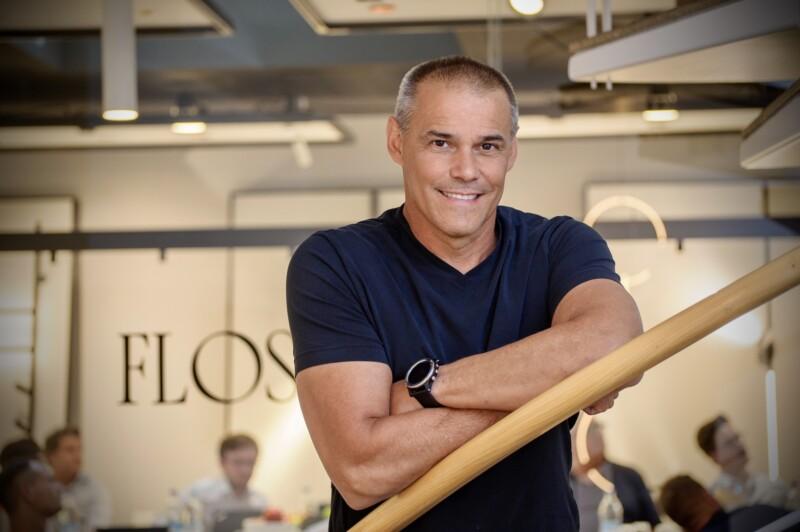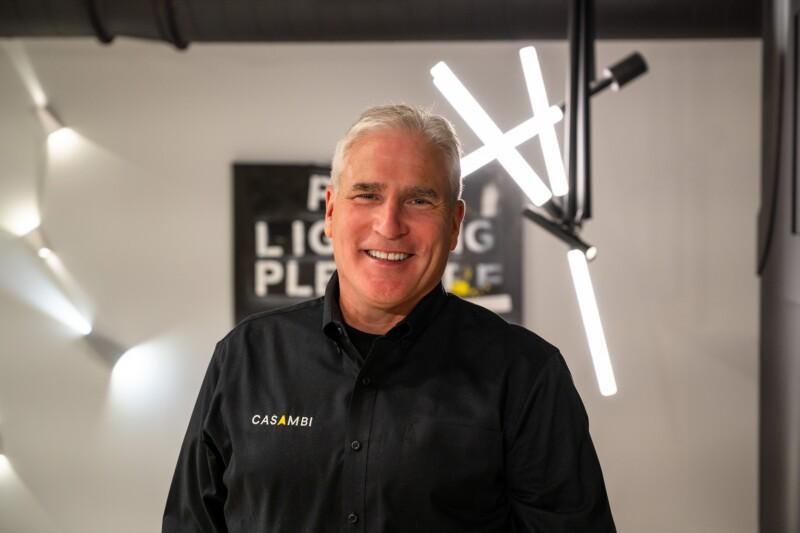How digital ready is the building industry?

Thought leaders from Google, EnOcean, Zumtobel, Hoare Lea, and Casambi debated this question during the 2022 Casambi Summit. Lighting holds a huge reserve of latent data and smart lighting control can be used as an entry point to Digital Ready buildings. So, what’s slowing us down? Here are eight key talk takeaways.
- Lighting plays a crucial role in the digitalization of buildings. Luminaires act as carriers for radio infrastructure enabling many sensor-based Smart Building applications. Lighting can be used as an onramp for indoor navigation applications, occupancy monitoring, HVAC automation – all optimizing the provision of bespoke services within a building.
- The challenge lies in the fact that building data is largely captured and siloed into very specific proprietary platforms – spanning the separate verticals from lighting, to heating, to security, to occupancy data capture. If we want to enable truly smart buildings, it’s really about aggregating all this data to provide a holistic view.
- Open standards are needed to cut horizontally across these data verticals so that the various devices across a building can understand one another and speak the same language. This opens the doors to intelligent systems whereby, for example, occupancy monitoring can influence the optimization of lighting, HVAC, and the utilization of space.
- When it comes to construction, the priority seems to be real estate: the steel, the glass, the concrete, and how beautiful the building is. And yet, it’s the lighting, the temperature, the humidity, the feel, and the services within the space that account for the most complaints thereafter. This suggests that services – which are often an afterthought – should be prioritized in the concept and planning stages.
- However, if the construction industry is to adopt rapidly evolving, emerging technology for future building projects, someone needs to own the risk. Writing the specification for a building that is a year away is a challenge. Therefore, product manufacturers need to offer more support in realizing the vision – they need to be more open with their roadmaps. So, someone needs to own that risk … or we humans naturally default to taking the safe option and nothing evolves.
- Digitalization and sustainability go hand-in-hand. But we need to guarantee long product lifecycle for installed hardware. A key point with software is that you can constantly update and enhance it. Casambi Ready devices, for example, can be dynamically updated in the field. This means that we can keep enhancing the system and keep all units interoperable. We can be sure that all the units in the network have the latest and best version of the firmware. It’s this software-driven mechanism that allows constant and fast evolution, reacting to real market needs and more importantly, extending the lifespan of installed devices.
- When introducing new innovative solutions to the market, we need to consider how to scale sustainably. Because data harnessing needs to happen in volume, there are reports of a trillion sensors entering the market. A trillion sensors are going to require the equivalent of the entire UK population changing batteries every three years. We need to replace the need for batteries with alternative solutions such as energy harvesting – otherwise, we risk replacing one problem with another.
- For digitalization/IoT deployments to make environmental sense, it’s about striking a balance between hardware material use and the benefits of the smart systems they enable. Because lighting is so prevalent in our communities – across work, leisure, and family life – lighting fixtures can become and easily form an access point for other applications. It’s a great pre-existing starting point.
Why not enjoy the full discussion between Francesco Anselmo from Google, Raoul Wijgergangs from EnOcean, Guenther Johler from Zumtobel Lighting, Rob Mitchell from Hoare Lea, and Timo Pakkala from Casambi Technologies… We’ve published the recording on Youtube.
Interested in learning more about Casambi? Drop us a note, and we’ll reach out to you:


